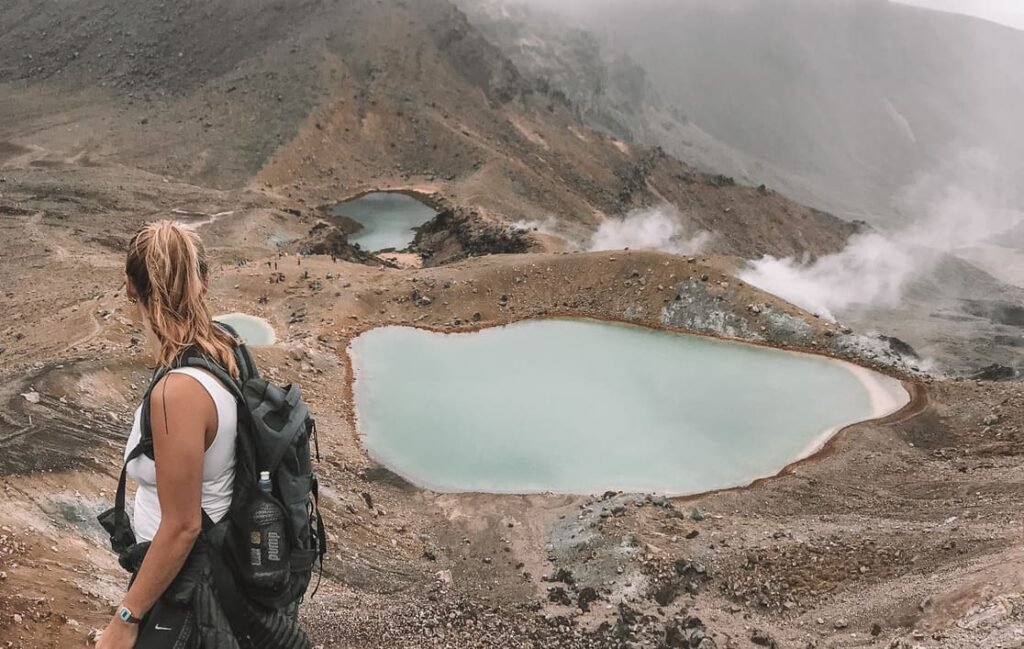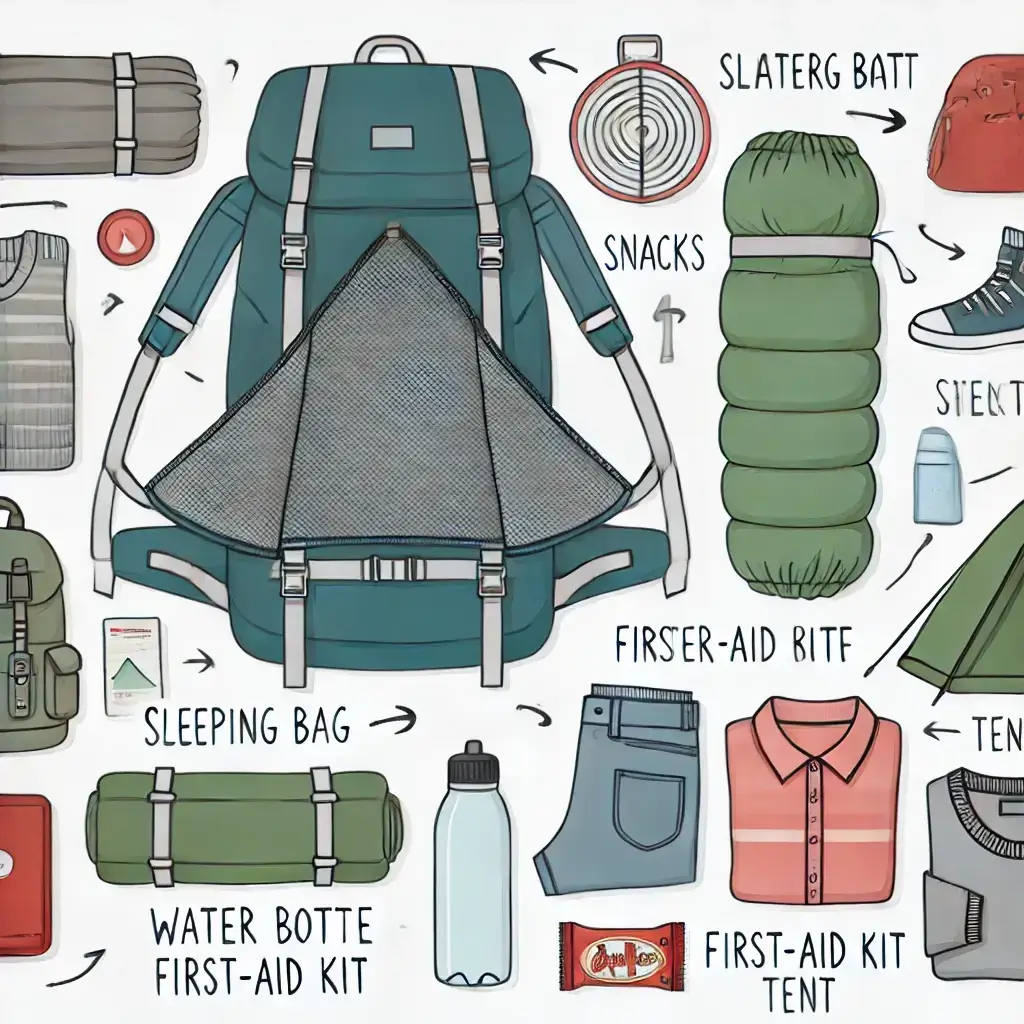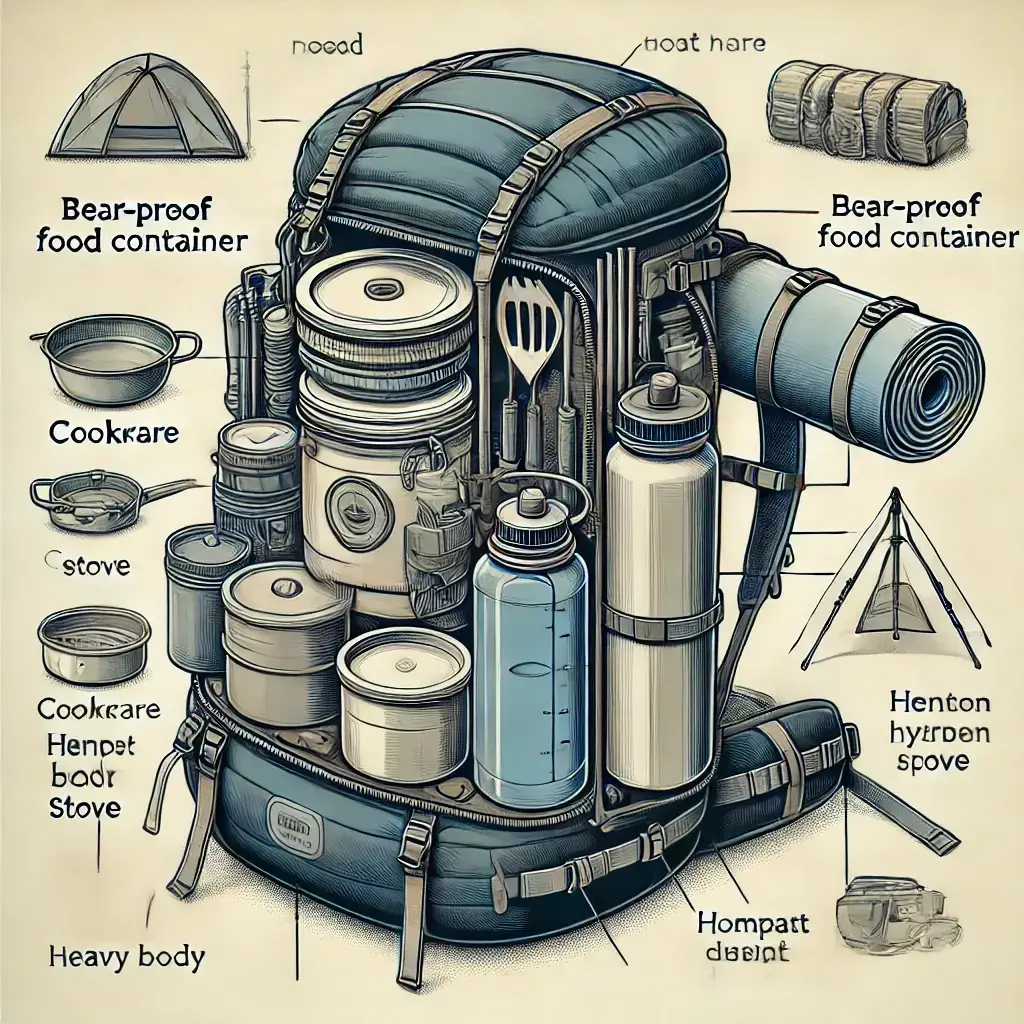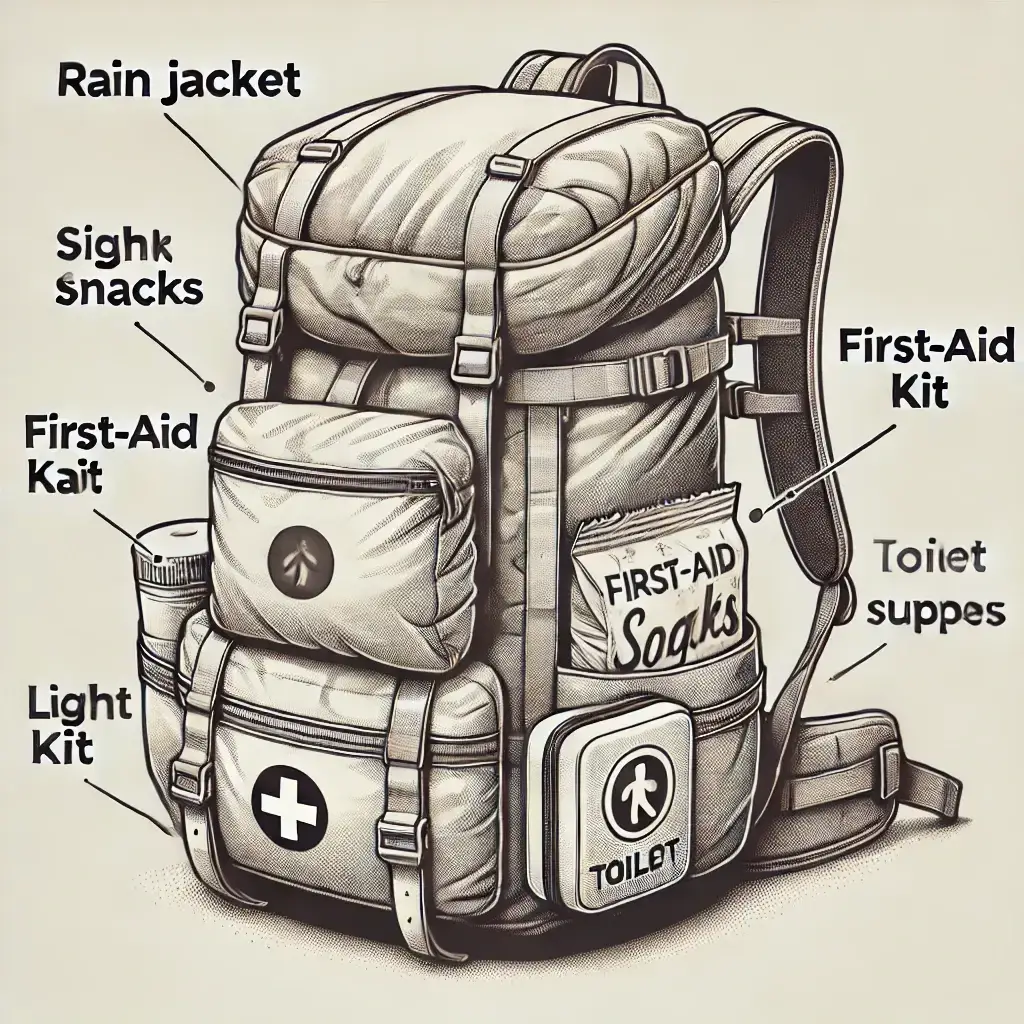Are you heading out on an adventure and wondering how to pack a backpack properly? You arrived at the perfect spot!
My very first backpacking experience was a solo trip through South America. Like most beginners, I packed way more than I needed and had no idea how to fit everything comfortably into my backpack. But after a bit of trial and error (and a few sore shoulders), I finally got the hang of it.
Now, whether I’m heading out for a camping trip or a hiking adventure, I use the same principles I learned back then.
Packing a backpack is all about balance, accessibility, and, most importantly, comfort.
In this guide, I’ll walk you through how to pack your backpack so you can enjoy the trail without any back pain or forgotten essentials!
What to Know Before Packing a Backpack

Before you start tossing gear into your bag, it’s important to prepare the right way.
Understanding what kind of backpack you’ll need and how to keep your gear safe from the elements can make your hike or camping trip more comfortable.
Whether you’re heading out for a short hike or a longer camping adventure, the right preparation makes all the difference.
Here are some key things to consider before packing your backpack:
- Pick the right bag size: Your backpack’s size depends on the length of your trip and the gear you need. For short trips, a 40-50L bag is usually enough. Longer trips or more gear? Look for something between 60-75L.
- Fit matters: A properly fitted backpack distributes weight evenly, which is critical for comfort. Adjust the hip belt first, then the shoulder and chest straps to make sure it fits snugly without pinching.
- Use packing systems: Color-coded stuff sacks, dry bags, and packing cubes help you stay organized and make finding other gear a breeze.
- Waterproof your gear: Protecting your gear from rain or moisture is essential whether it’s a waterproof pack cover or a liner inside your backpack.
- Pack based on accessibility: Items you’ll often use, like a water bottle or snacks, should be easy to grab from side pockets, while heavier gear like your tent should sit close to your back.
Once you’ve chosen the right bag and prepared your gear, it’s time to pack everything correctly.
Let’s dive into the step-by-step process of how to pack a backpack for a smooth and comfortable adventure.
How to Pack a Backpack Correctly

Now that you’ve prepared and chosen the right gear, it’s time to pack!
The key to a well-packed backpack is distributing the weight properly to ensure balance and comfort throughout your hike.
I like to think of my backpack as having different “zones” that help organize where each item should go.
Let’s break it down:
Bottom of the Pack: Bulky, Lightweight Gear
The bottom of your backpack is where you should place items you won’t need until you reach camp. This includes light, bulky gear that you don’t need to access during the hike.
These items will also form a base to balance the rest of your pack’s weight.
Here’s what to pack at the bottom:
- Sleeping bags: If your backpack has a separate compartment for this, use it! Otherwise, stuff your sleeping bag in to form the foundation.
- Sleeping pad: If it’s inflatable, it will easily fit. Foam mats might need to be strapped to the outside.
- Camp clothes: Things like your sleepwear or extra socks can fill gaps around other bulky items.
Packing soft, squishable items here also helps with shock absorption, making the backpack more comfortable to carry.
When pacing clothes don’t be afraid to squeeze them into gaps and little spots, this will give you more space and less dead space.
Middle of the Pack: Heavy Gear

This is where you want to concentrate the heaviest items. Keeping them close to your back and midsection helps with weight distribution, making your backpack feel more comfortable and easier to carry.
Pack these heavier items in the middle:
- Food: Place it in a bear-proof container if necessary and store it here.
- Cookware and stove: These are dense and best placed in this section.
- Water reservoir: If your pack has a designated pocket for a hydration bladder, fill it and tuck it against your back for balance.
- Tent: If it’s small enough to fit inside, the body and poles should go here. Otherwise, the poles can be strapped to the outside.
Remember to fill gaps with any extra clothing or soft items to prevent shifting, which can throw off your balance while hiking.
Haven’t got a tent yet? Check out my recommendations for the best large high-quality tents for the ultimate comfort.
Top of the Pack: Light and Essential Gear

The top of your pack is for items that are lighter and things you might need to grab quickly during your hike. You don’t want to be digging around in the middle of your pack to find these hiking essentials.
Here’s what to pack on top:
- Rain jacket or rain gear: You’ll want easy access to layers and rain cover in case the weather changes.
- Snacks and lunch: Keep your food accessible so you don’t have to stop and unpack.
- First-aid kit: Always keep this handy for emergencies.
- Toilet supplies: A small bag with essentials like a trowel, toilet paper, and sanitizer should go here.
Pockets and Accessory Loops: Quick-Access Items
Once you have a full pack, it’s difficult to find your stuff. So use your backpack’s outer pockets and haul loop for smaller items that you’ll need to grab quickly without taking off your bag. Make sure these items are lightweight to avoid adding strain.
Here’s what to store in the pockets:
- Water bottle: Keep it in a side pocket for easy access.
- Trail snacks: Energy bars or nuts can go in your hip belt pockets for quick fuel.
- Sunscreen and lip balm: Keep these in a top pocket or outer pouch to reapply on the go.
- Trekking poles: If you’re not using them right away, secure them to your pack’s loops.
Packing your backpack with balance and accessibility in mind will make your hike much more comfortable. Now that you’ve packed everything, double-check your straps and make sure everything is secure.
What to Look for in a Good Backpack
Now that you know how to pack correctly, I also want to share some tips for choosing the right backpack, especially if it’s your first time.
A well-fitted, functional backpack can make a world of difference on the trail, so here are a few things to consider:
- Comfort and fit: Look for adjustable shoulder straps and a padded hip belt. These should be comfortable when your backpack is fully loaded and help distribute weight evenly across your body.
- Internal frame packs: For most hiking and camping adventures, these are ideal. They help support the weight of your gear while maintaining balance and stability even with a fully loaded pack.
- Capacity: Choose a size that matches the length of your trips. A 40-50L pack works for shorter trips, while a 60-75L pack is better for longer adventures with more gear.
- Water bottle pockets: Most packs have this, but make sure the backpack has accessible water bottle pockets on the sides for quick hydration on the go. If you prefer a hydration bladder, check for a compartment that supports it.
- Stretchy front pouch: A stretchy front pouch is super handy for storing lightweight items like rain gear or snacks, allowing easy access without digging into your main compartment.
- Ventilation: Look for packs with mesh panels or air channels along the back to keep you cool and reduce sweating during long hikes.
- Durability: Choose a backpack made from strong, water-resistant material that can withstand rough conditions without tearing.
For my personal backpack recommendations, read: Best Hiking Backpack for Women | 7 Ultralight & Great Picks
Wrapping Up
That’s it for this beginner’s guide on how to pack a backpack!
With a bit of practice, you’ll get the hang of it in no time.
Just remember the key principles: pack clothes at the bottom, and heavy items in the middle, and keep your essential items at the top. Use all the straps to ensure proper distribution, and make sure you have quick access to things like your water bottles, sunscreen, and snacks.
With these packing tips, you’ll be ready to tackle any future camping or hiking adventure. I hope this article helped you feel more prepared! If you enjoyed it, be sure to check out my other guides on:
- Hiking Essentials for Beginners I Gear For Your First Trek
- Easy Day Hike Lunch Ideas | Simple and Nutritious
As always, feel free to leave any comments or questions below!
//Josephine

